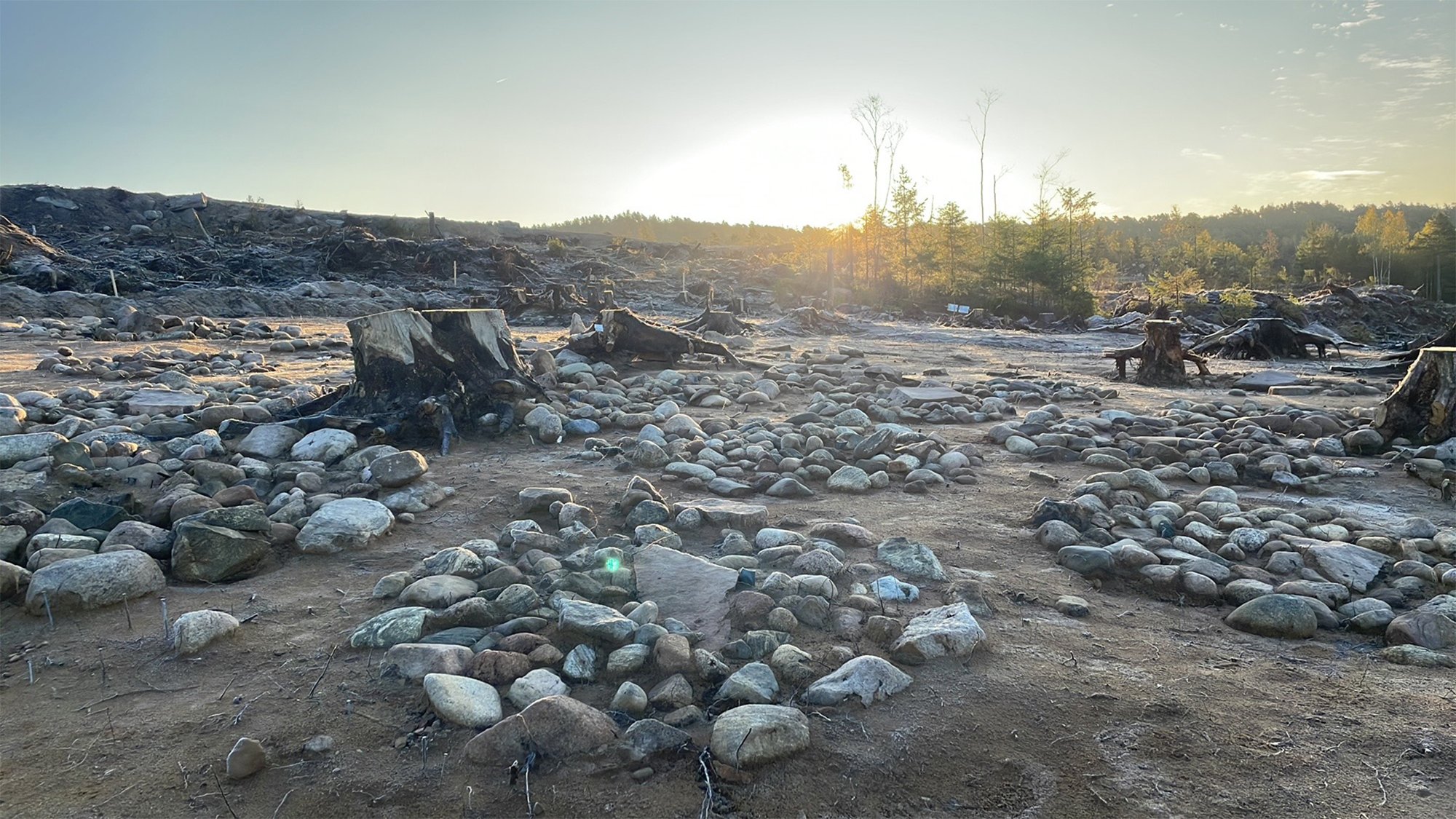

A series of intricate stone circles uncovered by archeologists in southern Norway turned out to be the graves of several young children from the Bronze and Iron ages. This unique burial site contains stone circles about six feet across. Great care and consideration appears to have been taken, since the stones were neatly placed together and buried just a few inches below the ground. Several of the circles were positioned around a bigger stone at the center and additional research found burned bones and pottery shards underneath these stones.

A team from Norway’s Museum of Cultural History discovered the burial ground in fall 2023, near the town of Fredrikstad, about 50 miles south of Oslo. It was uncovered by chance, while a team was investigating a Stone Age settlement nearby. Their analysis found that almost all of the burials contain the remains of children. The youngest were infants, with the others ranging from three to six-years old. They died between 800 and 200 BCE, roughly 2,500 years ago.
“They’ve lain here as a secret until we found them,” archaeologist Guro Fossum told Science Norway. “We uncovered one after another and ended up with 41 round stone formations.”
According to Fossum, the burial site appears to have been used over a long period of time. This indicates that they likely didn’t die of an epidemic, disease outbreak, or some kind of natural disaster. The area around the burial ground is also lined with rock carvings that describe sun worship and various voyages. The team believes that the site must have been an open landscape where lots of people could see them. There were cooking pits and fireplaces near the site, which suggest that ceremonies or gatherings were held in connection to these burials.
[Related: This Renaissance-era baby died from living in darkness for a year.]
The graves were also meticulously crafted. Each stone sourced from a different location and precisely placed, likely because most of the dead were children.
“They were small children’s graves,” Fossum said. “This was done with so much care.”
This kind of concentration of children’s graves is unique in Europe, particularly in Norway. It was more common for the dead to be cremated on pyres during the Nordic Bronze and Iron ages. Any remaining bones were then scattered or buried. A flat layer of stones put together in a spiral or wheel pattern was then often constructed on top of the cremation site, according to Fossum.

“The field of children’s graves is unique in a Norwegian context, and opens up many questions to which the answers are still unknown: Why were the children buried in a separate place? Why here? And how did they hold on to this tradition for several hundred years?” the Museum of Cultural History wrote in a statement.
[Related: Ancient child’s grave holds intricate necklace with more than 2,000 stones.]
One of the formations is currently on display at the museum in Oslo in an exhibition called “In Memory of the Children.”
It is likely that infant mortality was probably high at that time, but do not have any other explanation for the gravesite. To learn more, a team of archeologists have taken samples and several photographs of the site.
Archaeologists will also continue to analyze the pieces of pottery and what might be a metal brooch that were uncovered at the site.